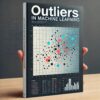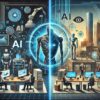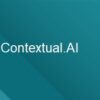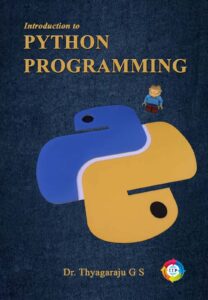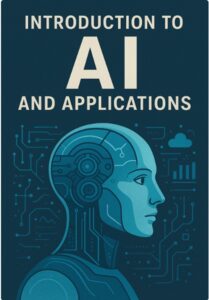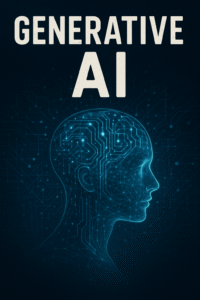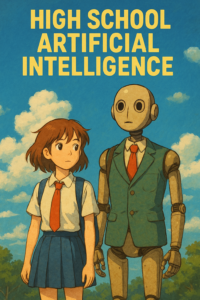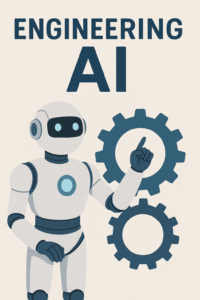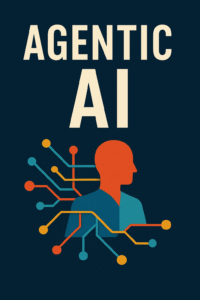“Everyone tries to exploit context, but context is like God—it follows its own path beyond human control.”
Category: Artificial Intelligence
Mastering AI Languages in the Age of Intelligent Agents: The New Communication Frontier
In the modern workplace, English has long been the language of business, globalization, and professional success. However, as we enter the era of AI-driven ecosystems—populated by intelligent agents and automation tools—a new form of communication is emerging as equally vital: AI languages.
Just as fluency in English enables effective collaboration between people, fluency in AI languages enables effective collaboration between humans and machines. In today’s increasingly automated world, mastering these languages is not only advantageous—it is essential.
Reimagining Higher Education: How AI is Reshaping the Future of Learning in India and Beyond
The traditional classroom setup—students seated at desks while a teacher delivers lectures using a blackboard—is rapidly becoming obsolete. Artificial Intelligence (AI) is not just a technological advancement; it’s a transformative force reshaping India’s higher education landscape. Dr. Abhay Jere, Vice Chairman of the All India Council for Technical Education (AICTE) and Chief Innovation Officer at the Ministry of HRD, emphasizes that AI is becoming foundational across disciplines, not just in engineering but also in social sciences, humanities, and natural sciences .
The Future Classroom: A Glimpse into Tomorrow’s Education
The concept of the classroom has been evolving for centuries, but the future of education is set to undergo a revolutionary transformation. With advancements in technology, personalized learning, and innovative teaching methods, the future classroom will be a dynamic and immersive environment designed to foster creativity, critical thinking, and collaboration.
The Rise of Dark AI: Unmasking the Threats and Ethical Challenges
Artificial Intelligence (AI) has revolutionized numerous industries, from healthcare and finance to education and cybersecurity. While ethical AI aims to benefit society by increasing efficiency, accuracy, and accessibility, the darker side of AI—referred to as Dark AI—poses significant risks. Dark AI encompasses AI models designed or manipulated for unethical, harmful, and even illegal activities. From generating phishing emails and deepfakes to automating cyberattacks, Dark AI has created new challenges for cybersecurity experts, policymakers, and businesses alike.
Challenges of Machine Learning
Machine learning (ML) has revolutionized industries, driving innovations in healthcare, finance, automation, and artificial intelligence. However, despite its immense potential, machine learning faces significant challenges that hinder its adoption and effectiveness. These challenges range from data-related issues to algorithmic complexities, scalability, and real-world deployment hurdles. This article explores the key challenges of machine learning and potential strategies to address them.
Machine Learning: What It Is, How It Works, and Its Types.
Machine Learning (ML) is a branch of artificial intelligence (AI) that enables computers to learn from data and make decisions without being explicitly programmed. Instead of relying on predefined rules, ML algorithms analyze data patterns and improve their performance over time as they are exposed to more data. This capability makes machine learning a powerful tool for automating tasks, uncovering insights, and building intelligent systems.
Uncovering Insights and Identifying Patterns in Data Science
Data Science is a powerful field that helps organizations make informed decisions by analyzing and interpreting data. Two key concepts in Data Science are insights and patterns. These elements enable businesses and researchers to understand trends, predict future behaviors, and optimize operations. In this article, we will explore what insights and patterns mean in Data Science, their significance, and real-world examples using actual datasets.
The Role of Machine Learning in Modern Technology: Need, Definition, and Its Interdisciplinary Impact
In today’s fast-paced digital world, we generate vast amounts of data every second. From social media interactions to online transactions, data is everywhere. However, making sense of this data manually is impractical. This is where Machine Learning (ML) comes in—a revolutionary technology that enables computers to learn from data and make intelligent decisions. But why do we need ML? What exactly is it? And how does it relate to other fields like Artificial Intelligence (AI), Data Science, and Statistics? Let’s explore.
Missing Data
Missing data is a common problem in machine learning and data analysis. When datasets have empty or null values, it can negatively impact model accuracy and decision-making. Handling missing data effectively is crucial for building reliable models and drawing meaningful insights. In this article, we will explore what missing data is, why it occurs, and different techniques to handle it, with real-world examples.
Dirty Data and Clean Data
Data is the foundation of machine learning and data analysis. The accuracy of a model heavily depends on the quality of the data used for training. In the world of data science, we often deal with two types of data: dirty data and clean data. Understanding these concepts is crucial for building accurate, reliable, and effective models.
Outliers
Outliers are data points that deviate significantly from the rest of the dataset. They can distort statistical analyses, degrade model performance, and mislead insights if not handled properly. In this article, we explore what outliers are, their types, methods to detect them, real-world examples, and how to deal with them in machine learning.
Bias and Variance
Bias and variance are two fundamental sources of error in machine learning models. Striking the right balance between them is crucial for building models that generalize well to unseen data. This article delves into the concepts of bias and variance, provides real-world examples, and offers a comparative analysis to better understand their impact.
The Future of AI Jobs: A Comparative Analysis of Opportunities for Aspirants With and Without AI Skills
The rapid evolution of artificial intelligence (AI) has brought about profound changes in the workforce, disrupting industries and transforming job roles. Bill Gates’ recent insights on AI’s impact underscore the need for professionals to adapt or risk obsolescence. While some jobs remain relatively secure, many roles will undergo significant changes, creating a divide between those with AI skills and those without. This article delves into the future landscape of AI-driven jobs and provides a comparative analysis of technical and software jobs for AI-skilled and non-AI-skilled aspirants.
AI Is Not a Tool; It Is an Agent!
In a thought-provoking conversation, historian and philosopher Yuval Noah Harari presented a groundbreaking perspective: artificial intelligence (AI) is not just a tool; it is an agent. This distinction is crucial to understanding the transformative power of AI in the modern world.
AI Agents and Their Types
Artificial Intelligence (AI) agents are at the heart of many modern technologies, from personal voice assistants to self-driving cars and sophisticated recommendation systems. These agents act autonomously in various environments, analyzing data, making decisions, and carrying out actions to achieve specific goals. As AI continues to evolve, understanding the different types of AI agents and their applications becomes essential for appreciating how these technologies impact our daily lives and industries.
Introducing the Next Frontier of Generative AI: AI Agents
The recent boom in generative AI has set the stage for a meteoric rise in AI agents. Industry projections estimate the market for AI agents will grow from USD 5.1 billion in 2024 to an impressive USD 47.1 billion by 2030. This remarkable growth, characterized by a compound annual growth rate (CAGR) of 44.8%, is fueled by breakthroughs in generative AI, enabling Agentic AI to perform increasingly complex tasks with minimal human intervention.
Introduction to Physics-Informed Machine Learning (PIML)
In recent years, machine learning (ML) has revolutionized various fields, from healthcare to finance, by offering powerful tools to model and predict complex systems. However, traditional ML models often act as black boxes, requiring vast amounts of data and sometimes ignoring fundamental physical laws that govern the phenomena they aim to predict. This is where Physics-Informed Machine Learning (PIML) comes into play.
Contextual AI
In the rapidly evolving world of artificial intelligence (AI), a new paradigm is emerging that promises to revolutionize the way we interact with intelligent systems. Contextual AI, a cutting-edge approach, focuses on creating systems that can understand and adapt to the context in which they operate, enabling more natural, seamless, and personalized interactions.
Generative AI Ready Datasets
Generative AI Ready Datasets, or Generative-Ready Datasets (GRDs) are specialized datasets curated to train and optimize generative AI models. These datasets encompass a wide variety of data types, ensuring that AI models can generate new content or insights based on diverse and comprehensive training data. The primary goal of GRDs is to provide a rich and varied dataset that allows generative AI to perform accurately and creatively across different domains. GRDs include a wide variety of data types, both structured and unstructured, such as text, images, videos, audio, and other multimedia formats.
Generative AI: Transforming Promises into Production for Every Company
Generative artificial intelligence, or GenAI, is the latest technological advancement that has captured the attention of businesses worldwide. Promising to revolutionize operations, employee workflows, and daily life, GenAI is heralded as a new era in industrial evolution. However, for companies where data isn’t intrinsically part of the culture, the challenge lies in effectively integrating and leveraging GenAI’s capabilities. This article outlines a practical approach to help such companies successfully embark on their GenAI journey.











